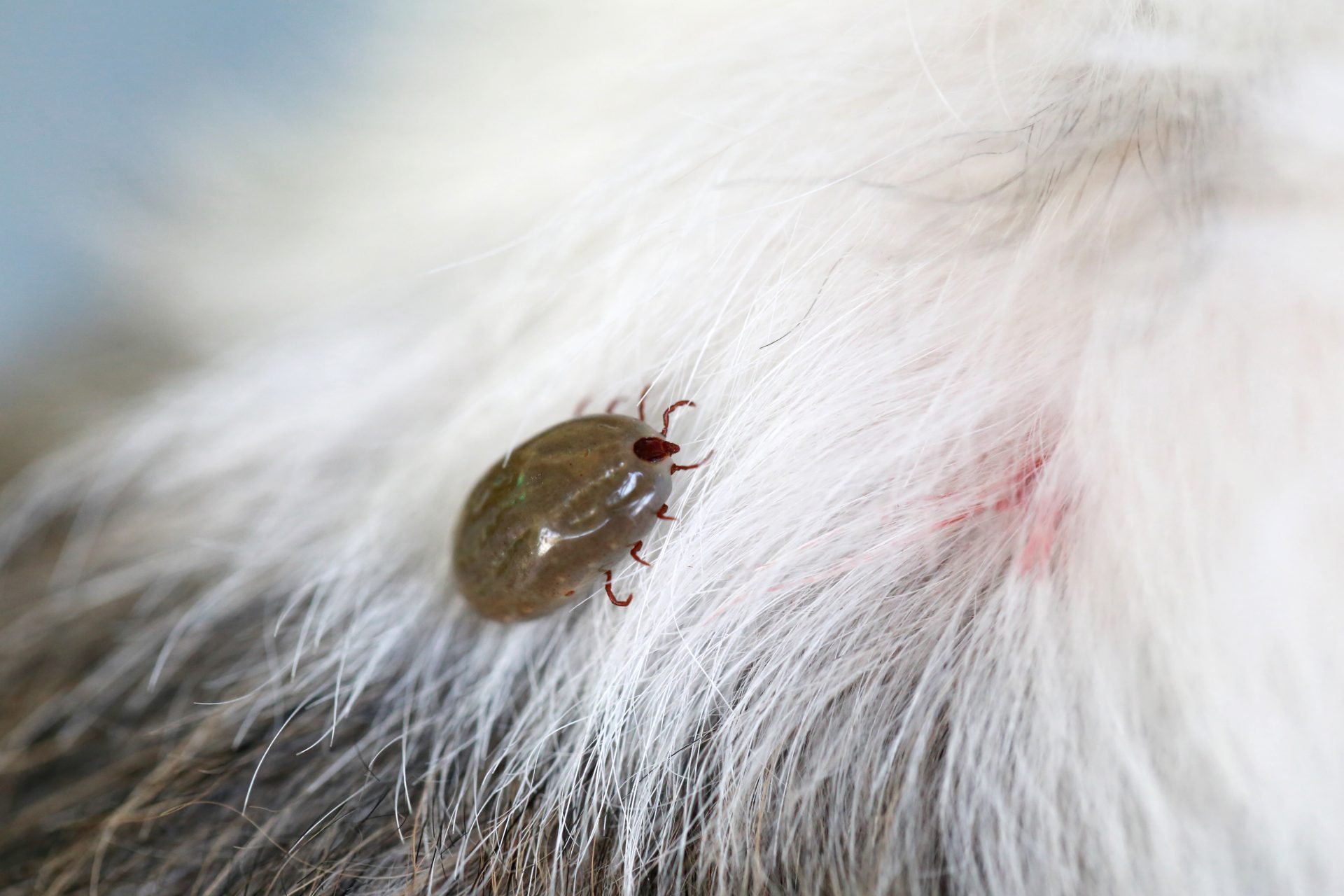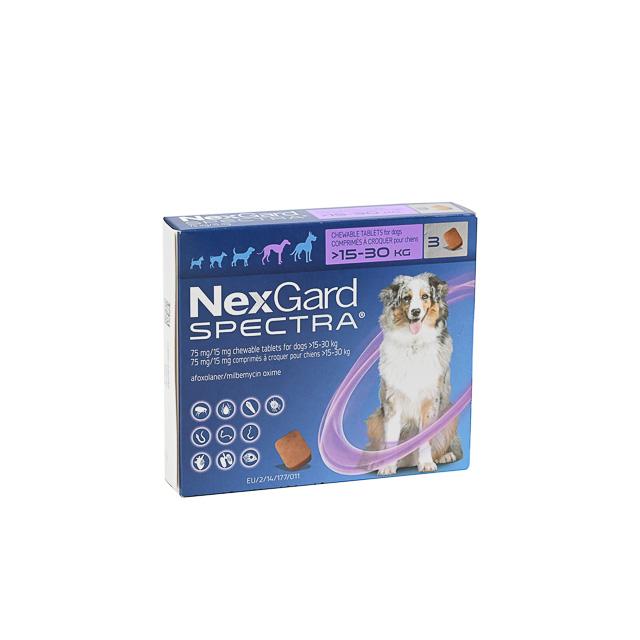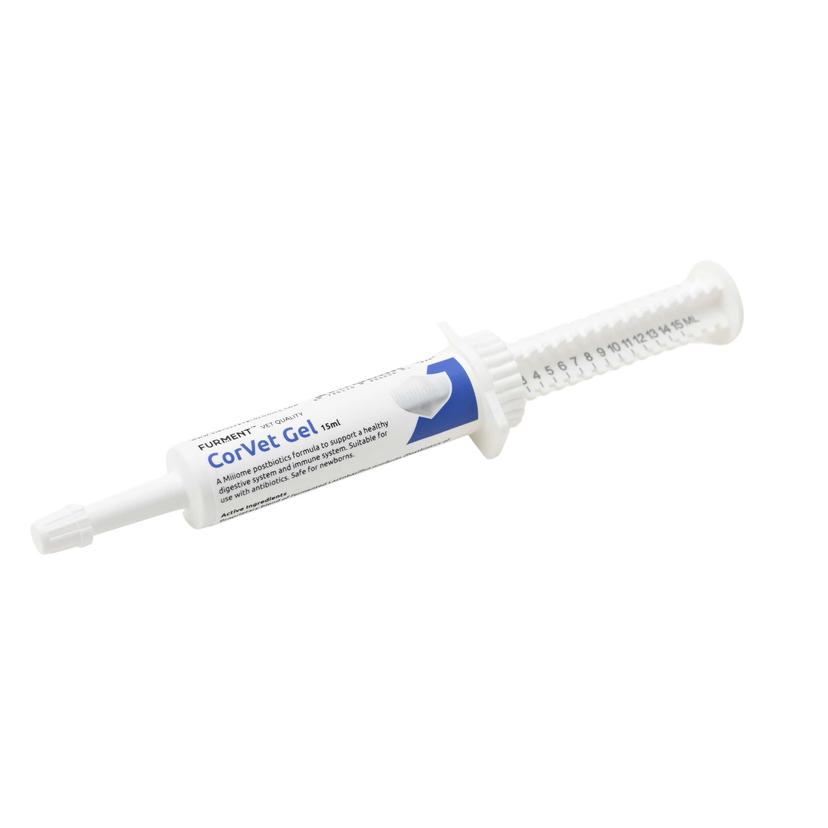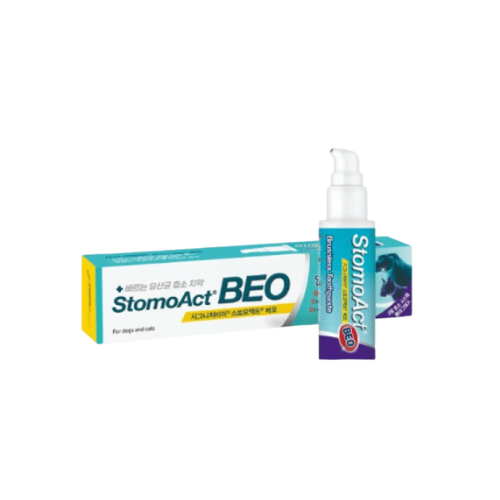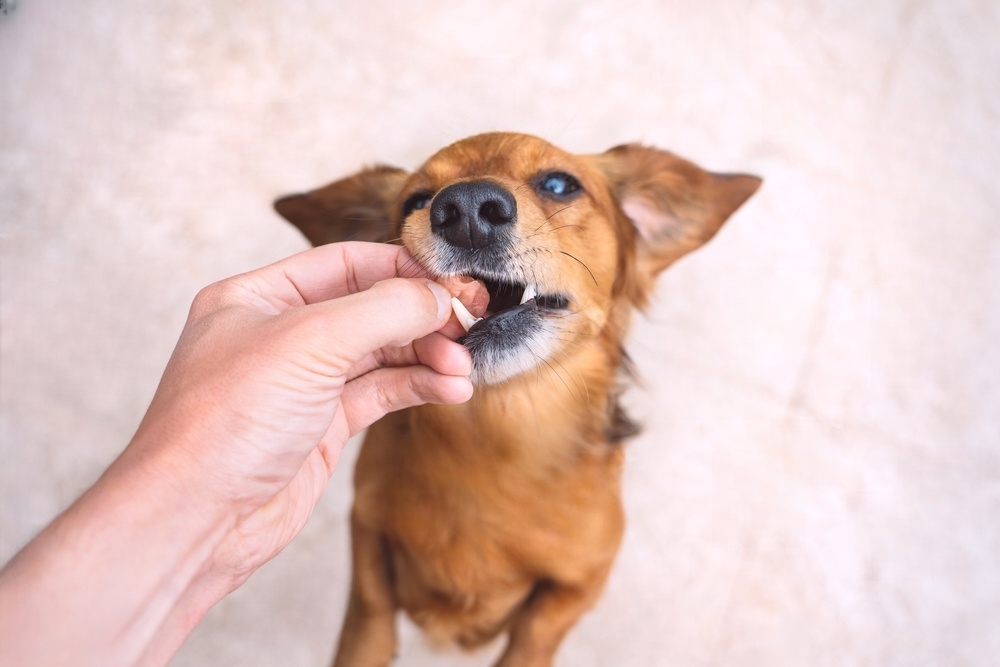Any pet parent would have at least heard the term “parasite control” once, which is one of the most important maintenance and protective measures to have for your pet. As long as you’re taking your furry friend out for walks, or to the park to meet their furry friends, then this article about fleas and ticks should provide you some valuable information about them.
External parasites like fleas, ticks and mites can not only cause discomfort and skin problems to your pet cat or dog, but also lead to serious health conditions if left untreated. In addition, due to Singapore’s hot and tropical climate, it is a perfect condition for the nasty bugs to thrive and breed, which further adds to the risk of encountering them in your pet’s lifetime.

What are ticks?
There are 3 main types of ticks – brown, bush and paralysis ticks. In Singapore, brown dog ticks are the most common. The brown dog tick is more species-specific and targets dogs only. There are also many other types of ticks which target either dogs or cats, or even humans as well. Unlike fleas which are much smaller, ticks are large enough to be seen crawling around in your pet’s fur. They also have eight legs and have no antennae.
Why could ticks be a problem for my pet dog or cat?
Ticks, unfortunately, are efficient carriers of diseases and are able to transmit tick-borne diseases easily when they bite and feed on the blood of their host (our furry friends!). Diseases can include anaplasmosis, ehrlichiosis and babesiosis which are transmissible via this parasite. Such diseases infect the blood cells of the body, and its immune system which can further lead to dysfunction and loss of red cells. If left untreated, it can lead to serious symptoms and become life threatening.
Symptoms of tick-borne diseases
- Reduced appetite/ Inappetance
- Lethargy
- Weight Loss
- Fever
- Pale or yellowish gums
- Discoloured urine (dark red/brown)
- Unexplained bruising
If your pet is displaying such symptoms, it is best to seek veterinary attention immediately. An online veterinary platform like Zumvet is always available if you are concerned that your pet may be showing signs of tick fever, or if you are unsure and you need a professional to verify that a clinic visit is required. Discussions on parasite control options customised for your pet are also available with a veterinarian on the platform.
How would my pet dog or cat get ticks?
Ticks that are ready in their life cycle would wait on the tips of grasses/plantations. When a moving animal brushes against the plant, the tick quickly releases itself from the plant and climbs onto the host (we call this questing!). This can occur while your dog is out exploring on a patch of grass, having a wee, or a good run at the dog park! Ticks attach and detach onto the host (your pet) to complete their own lifecycle of breeding and laying eggs at various stages.

What are fleas?
Fleas are very small insects that live, feed and breed right on our pets. They feed on blood in order to produce eggs which fall off and lay dormant in our environment. Once hatched, they would jump onto the host animal to complete their life cycle. Fleas are visually difficult to observe directly on your pet, and the most noticeable sign would be the presence of flea dirt on their fur (see picture above). Flea dirt looks very much like dirty specks of dark coloured dust on your pet’s fur, when in fact, they are faecal material from the fleas themselves!

Why could fleas be a problem for my pet dog or cat?
Flea saliva can frequently cause skin hypersensitivity (known as flea allergy dermatitis) in dogs and cats, and is a common skin condition that we see in practice. This can cause itchiness and discomfort to the pet, which would lead them to self-traumatize and cause secondary skin infections. If your pet is scratching away, do consider external parasites as a possibility first before looking into other skin conditions like food/contact allergies.
In heavy infestations, especially on kittens/puppies and compromised animals, anemia (low red cell count) can occur. They may appear as generalized weakness and lethargy, and/or with poor coat condition. Also, fleas can carry other vector-borne diseases, and acts as hosts for a common tapeworm (an intestinal worm) infestation to enter the gastrointestinal tract and cause gastrointestinal issues like diarrhea.
Symptoms of Flea Allergy Dermatitis (FAD)
- Moderate to severe itching
- Hair loss, especially around the base of tail, back, abdomen and thighs
- Crusty lesions around face, neck, abdomen, back, thighs
- Presence of flea dirt on fur (would appear reddish-dark coloured when wet!)
How would my pet dog or cat get fleas?
Mainly via meeting other dogs/cats that have already been infested with fleas in the community. Once fleas settle on a host, the environment may soon also contain flea eggs and larvae in many areas of the house like within the carpets, between the floorboards, beddings and furniture. The eggs may be difficult to spot, but they usually appear in the form of tiny white specks that resemble dust particles.
What if my cat or dog seem to have itchy ears?

Another common external parasite to consider other than fleas – if you notice hair loss and itching around the face, eyes, and ears of your pet, chances are it could be ear mite infestation. Ear mites are highly contagious and can be transmitted via direct contact with another infected animal. Due to their micro size, it is near impossible to spot with the naked eye.

Signs of ear mite (Otodectes cynotis) infection
- Itching around the ears, or head shaking
- Dark waxy discharge from the ear
- Hair loss and crusty lesions due to excessive itching/grooming
Sometimes the groomer would raise concerns about ear mites for the cause of dirty ears, and it is well worth it to investigate further with a professional veterinarian. Thankfully, there are also many products that deal with ear mites. fleas and ticks, as well as other external parasites that may be a concern.
Am I able to get rid of fleas, ticks or ear mites on my own?
The short answer is yes, you can. Today, there are many products that deal with ear mites. fleas and ticks, as well as other external parasites that may be a concern.
However, if you are unsure of what could be the root cause of the problem, it is always better to seek an accurate diagnosis from professional vets first.
On the contrary, if you have determined the cause of the problem which is parasitic in nature, here’s a few vet-recommended parasite control and treatment solutions for dogs or cats, which are also available in our e-commerce store, Zumshop:
1. Bravecto Oral Tablet – Chewables for dogs

Bravecto is an oral treat that treats and prevents external parasites including fleas, ticks and mites with a protection of three months per chew. Each chew is formulated to taste like any other treat, making it easy to give, and can be administered with food.
Bravecto comes in different weight classes for the appropriate doses for your dog.

The Bravecto chew only covers the external parasites. You can pair this with the oral medication, Drontal For Dogs.
2. Drontal for Dogs – Oral medication tablets for dogs

Drontal for Dogs is an oral intestinal deworming tablet formulated to remove common internal parasites (including tapeworms, roundworms, whipworms) in dogs. Each oral tablet can be taken once every three months and can easily be mixed into your dog’s food.
3. Nexgard Spectra – Chewables for dogs

If buying two products at the same time could be a hassle, you can also opt for Nexgard Spectra, which is developed to be a complete protection product against fleas, ticks, mites, and intestinal worms in one tasty beef flavored chew.
It is safe and effective and can be given to puppies from 8 weeks of age, and weighing at least 2 kg. Nexgard Spectra also comes in different weight classes for the appropriate doses for your dog.
Unlike the first option, Nexgard Spectra also protects your dog from heartworm, which can be transmitted by mosquitoes. If your dog is not on regular heartworm control prior to starting Nexgard Spectra, do seek a veterinarian for heartworm testing to ensure that your dog is heartworm-negative prior to purchasing and administering this product.
4. Revolution Plus For Cats – Topical application for cats

Revolution Plus for Cats is a topical treatment that offers protection against fleas, ticks and ear mites. It also covers internal parasitic worms like heartworm, intestinal roundworm, and hookworm. The topical treatment makes it easy to administer – a small volume of solution is applied to the back of the neck and provides monthly protection for your cat.
5. Selapro® Spot On Puppy/Kitten – Topical application for puppies and kittens

Selapro® Spot On Puppy/Kitten is effective in preventing and treating fleas, ear mites, heartworm, and intestinal worms. It is recommended for puppies and kittens from 6 weeks of age, weighing up to 2.5 kg. Selapro contains the same active ingredient as Revolution (selamectin), which makes it a great alternative if sourcing for Revolution is difficult.
6. Advocate for cats – Topical application for cats

Advocate is an all-in-one parasite protection to protect your cat from fleas, mites, heartworm, and intestinal worms. However, there is no tick protection in this product. A single dose is effective for a month, and is recommended for fully indoor cats, or cats with a low risk of acquiring ticks from the outdoors.
Do I have to treat the environment?
Ensuring good hygiene in the environment would be beneficial to reducing any infestation on your pet and around the house. Sprays containing IGRs (insect growth regulators) are useful to eliminate them. Treat the entire house first, then concentrate on your pet’s favourite spots – their beddings, rugs and other soft furniture. Regular vacuuming of floor cracks/corners and rugs can also help pick up flea eggs and larvae. Dog beds and beddings (and yours!) should be washed under the hot settings in the washing machine, or replaced. In addition, ensuring that we are on timely parasite control can break the parasite’s life cycle altogether.
Parasites will continue to thrive in hot and humid Singapore, so being on parasite control will also save you the cost of your pet contracting deadly vector-borne diseases (and also expensive veterinary treatments), which are all too many and so easily avoidable.
Choosing the type of control can be daunting for most pet parents with many available products on the market. If you are unsure which products to use for your pet and their lifestyle, having a chat with a vet online can be a convenient way to decide. It is well worth the benefits and peace of mind of knowing your pet is well protected while they carry on with their daily furry adventures!


